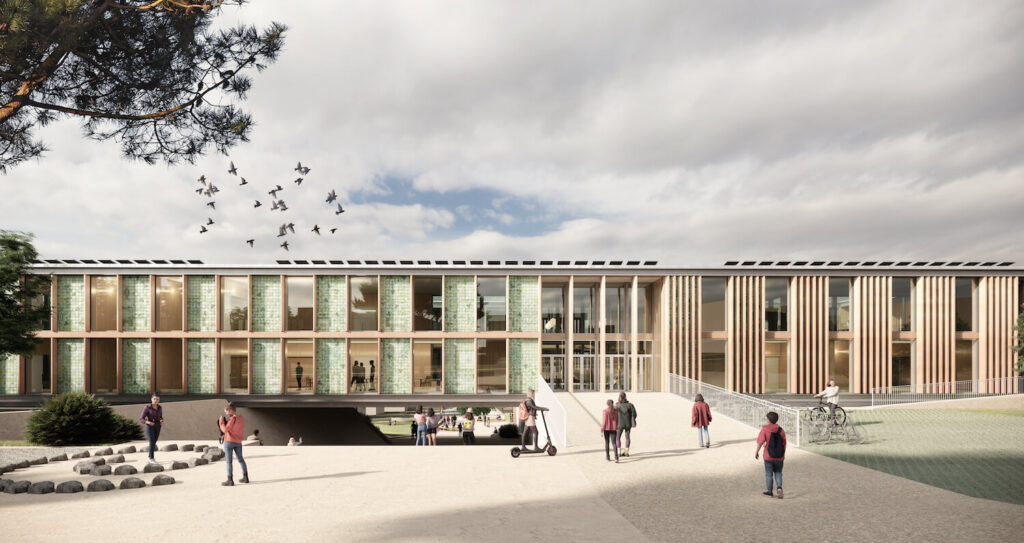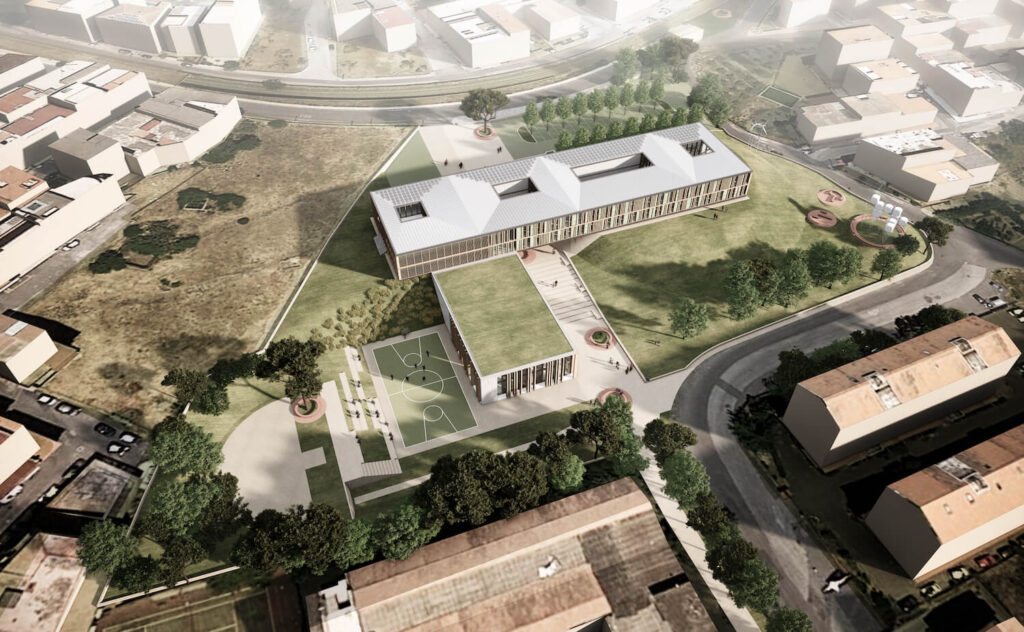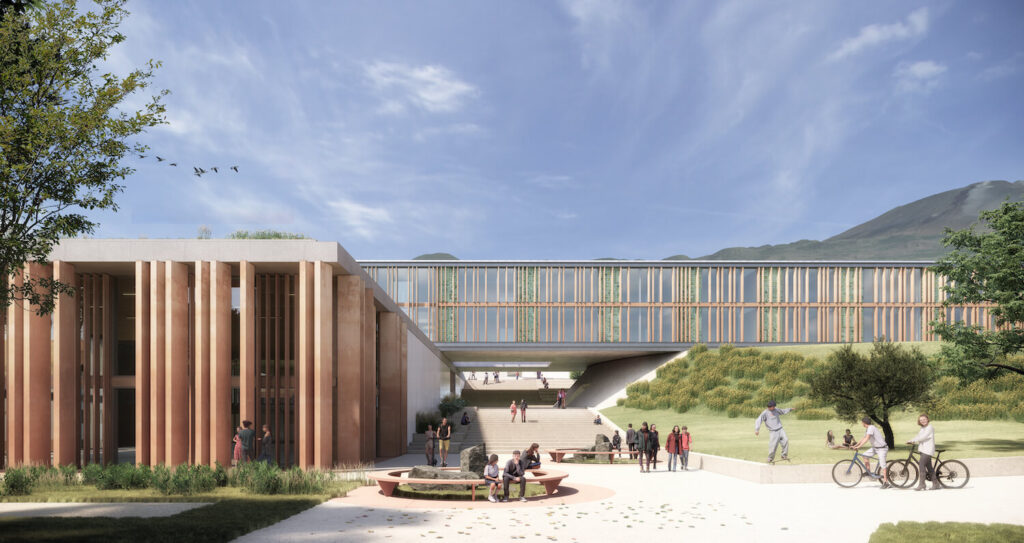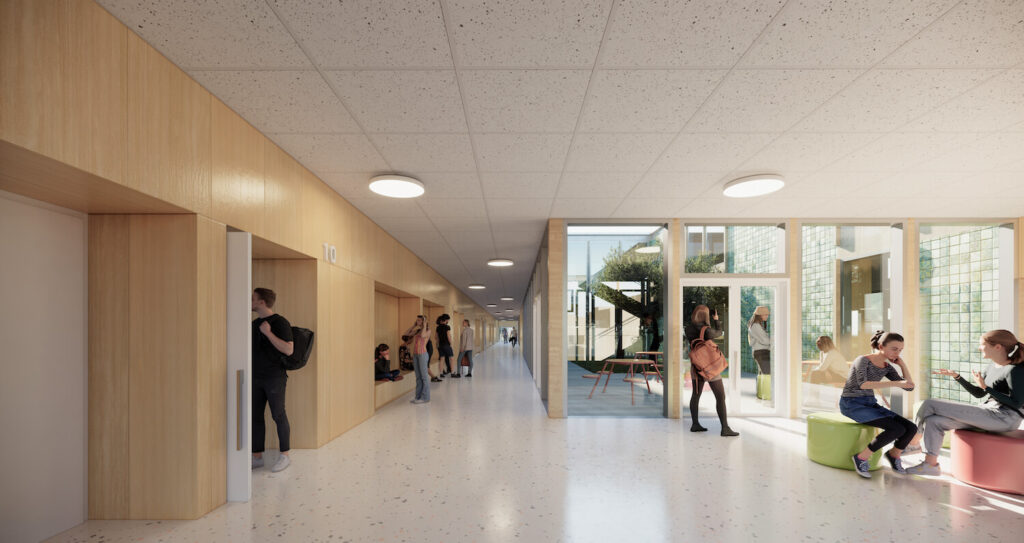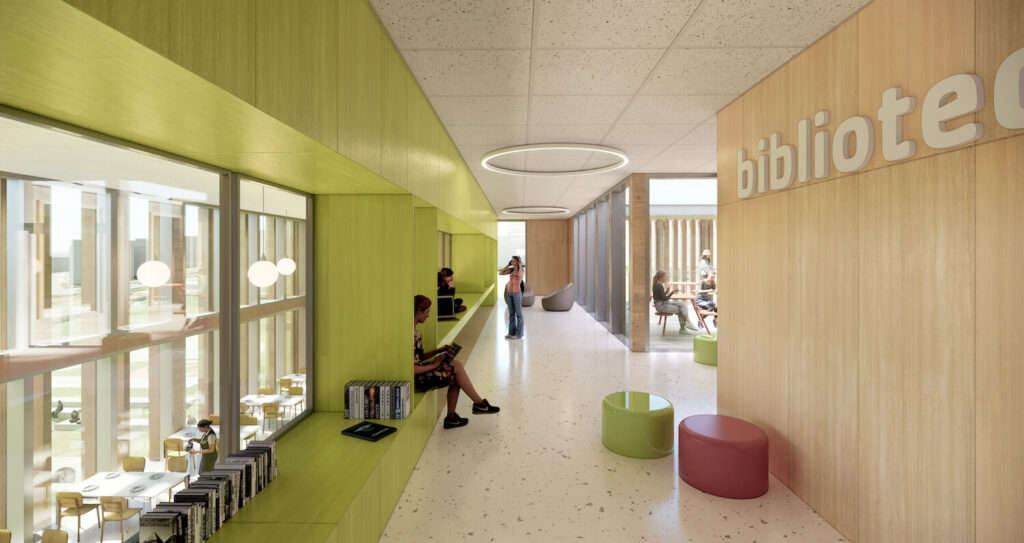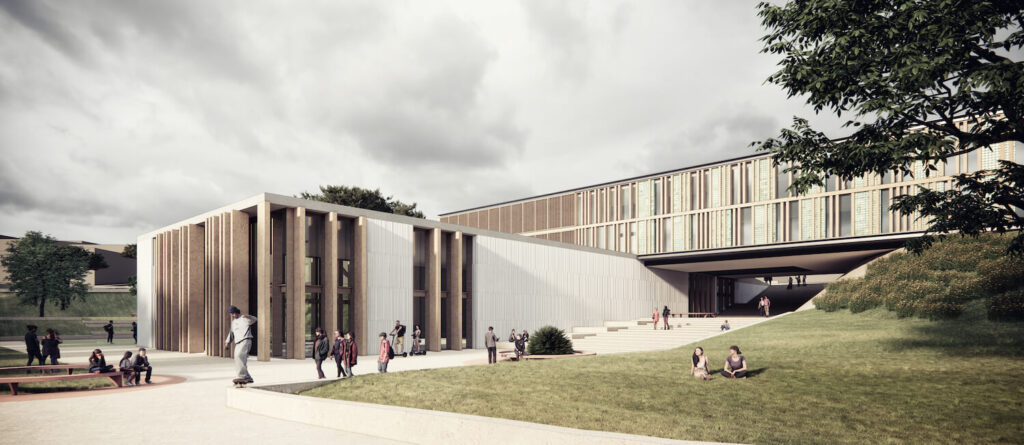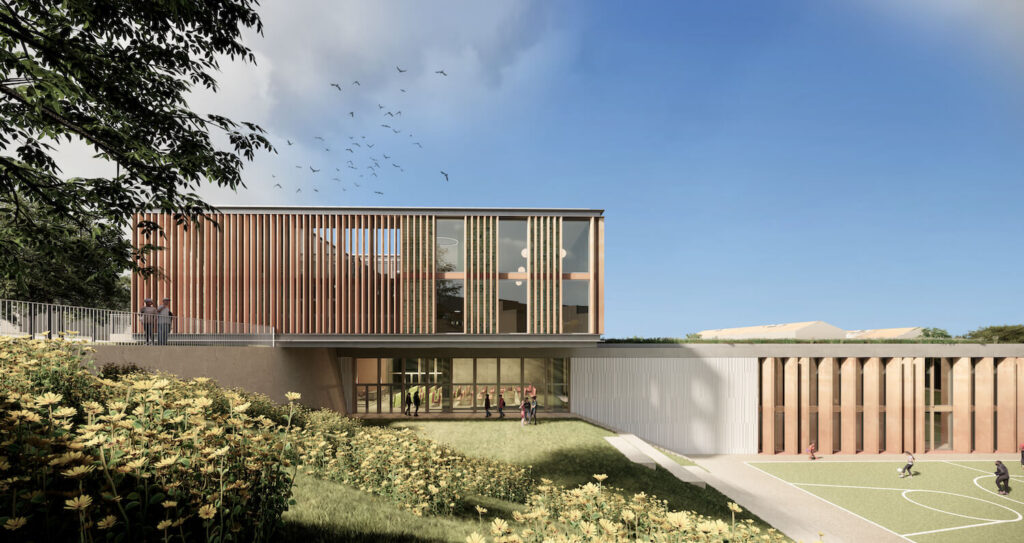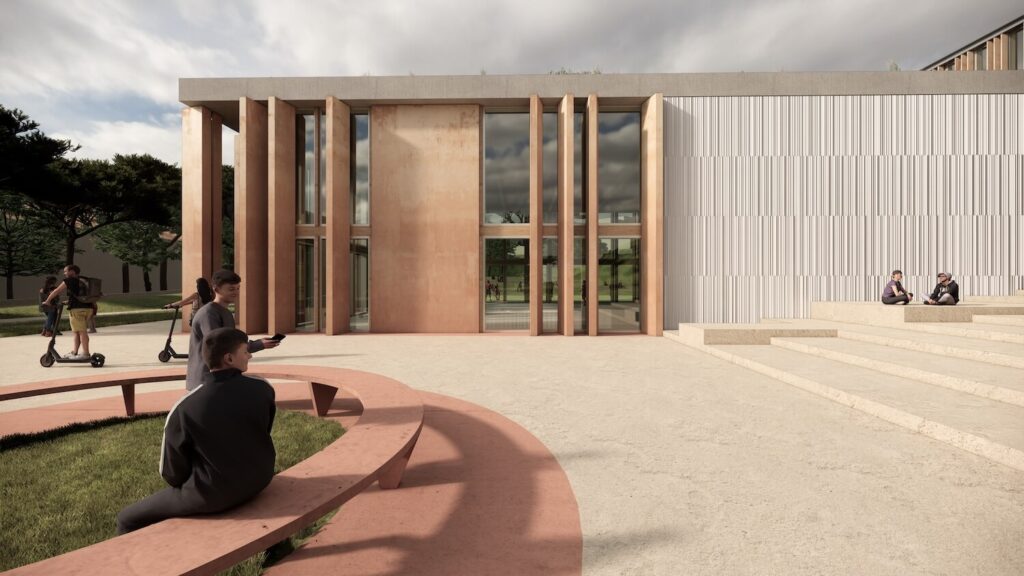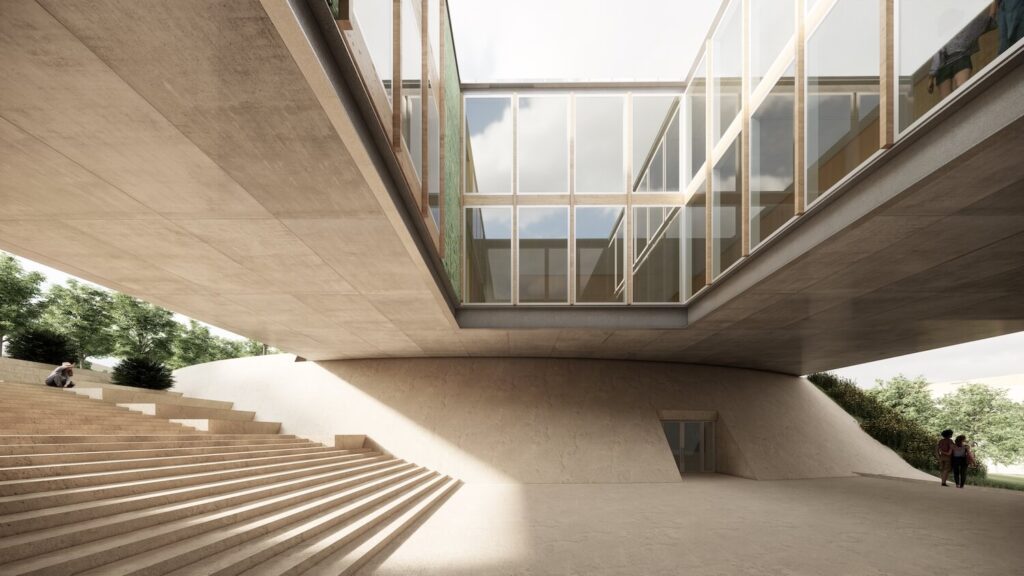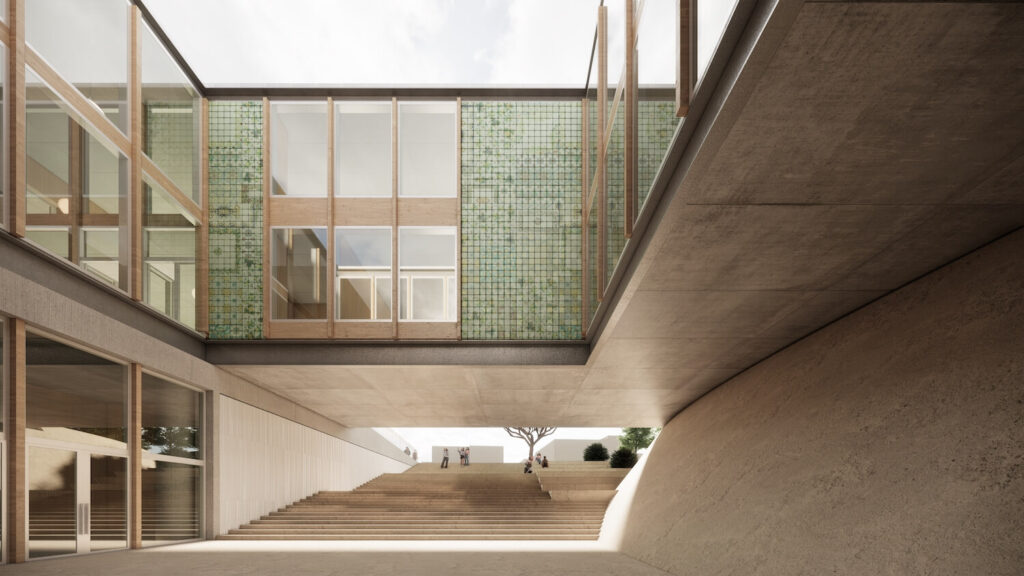The project envisages the demolition of the existing building and the construction of a new school complex, which, in addition to guaranteeing the safety of all users, will be able to prove welcoming to the students, activating a relationship of trust towards the school and the institutions it represents. In it, and in the social and cultural reality that it will be able to stimulate, students should be able to identify themselves, developing a strong sense of belonging. The work is designed to stimulate the meeting and exchange of ideas, including through open spaces within it, thus promoting a new system of relations between the school and the city and pursuing the project’s primary objective, i.e. the psychological and physical well-being of students.
Our Intervention
The architectural sign, compositionally simple, envisaged two main bodies, placed perpendicularly to each other and superimposed on each other in order to interact and fit harmoniously with the surrounding orography, with a veiled reference in a contemporary and rational key to the Santa Lucia Monastery complex. The different modularities of the façade, characterised by an ever-changing vertical rhythm, denote the building’s internal functions: the alternation of glass and opaque panels guarantees optimal lighting for each room. Thus, the laboratory area (defined by a more regular scansion), facing north, has larger and less shielded glass panes, as does the totally glazed entrance denoted by the lack of an exposed stringcourse. The classrooms on the southern side, on the other hand, are shielded from direct radiation by a sunbreaker system which becomes an architectural language, an expedient which is also useful for reducing the complex’s energy consumption. The façade is made of terracotta sun-shading elements, which are easy to maintain and durable, while the deterioration of the envelope is limited by ceramic finishes designed to protect the building from the aggression of atmospheric agents. The upper body is traversed by four patios that guarantee proper lighting to the connectives and enclose the internal courtyards which, equipped, increase the building’s already considerable green permeability. The internal pedestrian axis provides a ramp for use by the disabled in order to make the building entirely accessible and traversable. The accesses are designed so as to define on Via Donatello, in addition to the pedestrian entrance, a vehicular entrance serving a short parking area for school buses and private cars. On the eastern side of the site, on Via Pasquale Simone Neri, at a lower elevation, there is a driveway access for the covered parking area, technical rooms and storage areas subject to maintenance; on the southern side towards the city and the other school buildings, a pedestrian entrance has been planned, which will also be used for direct access to the gymnasium and auditorium buildings for extracurricular activities, and is on an axis with the road system penetrating into the city. The goal of sustainability was pursued through the adoption of high-efficiency systems and the choice of technological envelope solutions that favour passive climate control, but also through the exploitation of renewable energy, the use of recycled and recyclable materials, and the saving of resources. Combined, all these design choices guarantee the minimisation of the building’s environmental impact, thus contributing to the realisation of an nZEB building in accordance with the objectives of the CAM and PNRR guidelines. More specifically, the high ecological quality of the building process is guaranteed by the use of materials and construction techniques that allow for dry assembly, with consequent water savings and low energy consumption during construction; the use of materials from petrochemical synthesis is also limited, and low-energy materials are preferred, as well as the absence of polluting emissions into the air, soil, water and in the event of fire. The design of the electrical system and special systems is based on the principles of safety and functionality in synergy with the principle of rationalisation of energy consumption in respect of environmental resources and maintainability of the structure. The bioclimatic design of the envelope allows the use of alternative energy sources to support the energy needs, significantly reducing the system’s operating costs.
Technical Pills
From a structural point of view, the building is divided into two bodies: one (the gymnasium) with a seismic-resistant wooden structure on a single above-ground level, and the other, seismically isolated, with an isolation plane resting on reinforced concrete pillars surmounted by seismic isolators of the double-curvature friction pendulum type to limit seismic drift. On the isolation plane, consisting of a reinforced concrete slab of great rigidity, a wooden supporting structure is anchored on two elevations. The two bodies are founded on reinforced concrete slabs placed on the ground at different heights in order to limit the excavation volumes as well as the height of the basement.
Awards
First Prize – International Design Competition
Object of intervention
Demolition and reconstruction of Liceo Giovanni Verga in Adrano
Performances – Stancanelli Russo Associati
Drafting of the competition winning proposal
Technical and Economic Feasibility Design: in progress
Final and Executive
Design and Safety Coordination during the Design Phase: in progress
Client
Metropolitan City of Catania
Partners
MODO Studio, CLA studio ass., Ing. M. Pennisi, geol. S.Palillo
Year
design start 2023
Design technology
Modélisation des données du bâtiment (BIM)


